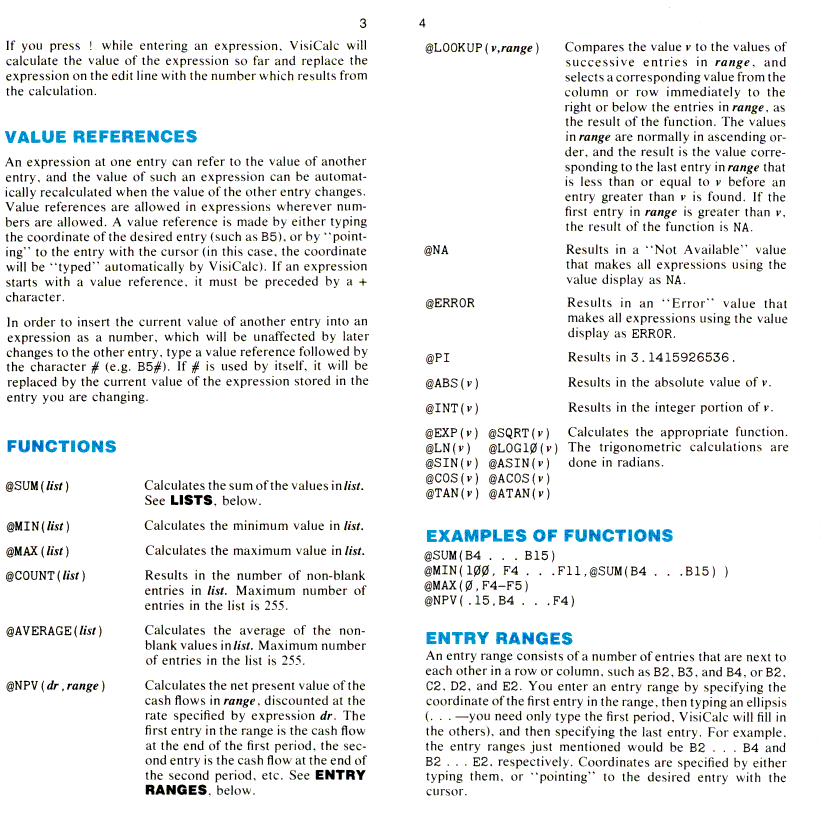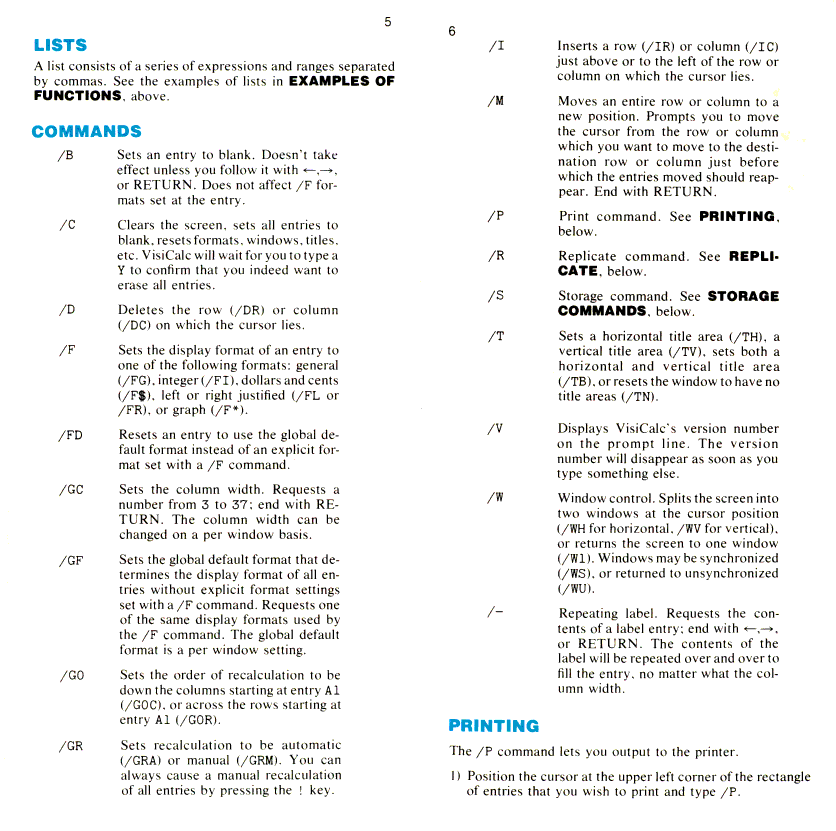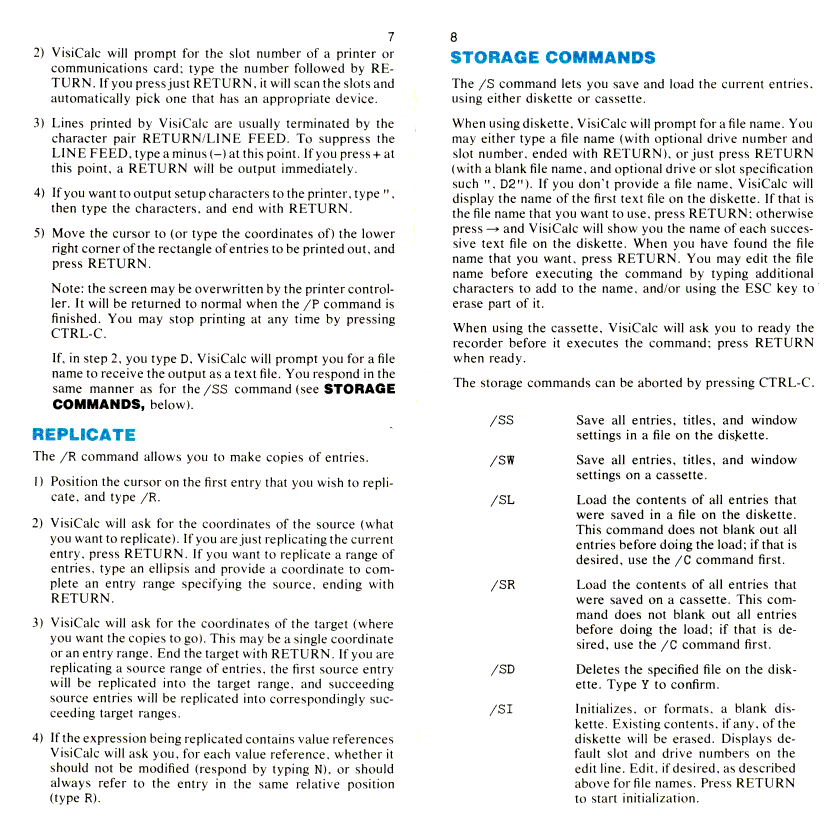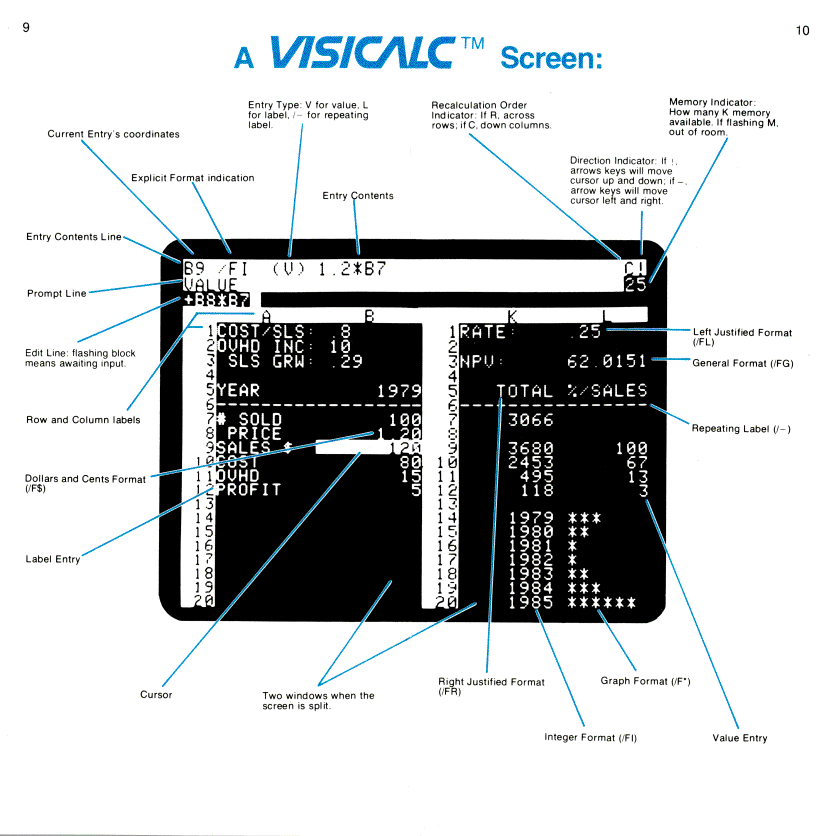Waiting for PCx86 to load
VisiCalc
VisiCalc was the first spreadsheet computer program. Originally released for the Apple II, it is often considered the application that turned the microcomputer from a hobby system for computer enthusiasts into a serious business tool.
Conceived by Dan Bricklin, refined by Bob Frankston and developed by their company Software Arts, VisiCalc was distributed by Personal Software (later named VisiCorp) from mid-1979. It was, in part, inspired by earlier "row and column" spreadsheet programs in widespread use at several national timesharing companies. Notable among these products were Business Planning Language (BPL) from International Timesharing Corporation (ITS) and Foresight, from Foresight Systems. Bricklin wrote, "with the years of experience we had at the time we created VisiCalc, we were familiar with many row/column financial programs. In fact, Bob had worked since the 1960s at Interactive Data Corporation, a major timesharing utility that was used for some of them and I was exposed to some at Harvard Business School in one of the classes." However, these earlier timesharing spreadsheet programs were not completely interactive nor did they run on personal computers.
According to Bricklin, he was watching a professor at Harvard Business School create a financial model on a blackboard. When the professor found an error or wanted to change a parameter, he had to erase and rewrite a number of sequential entries in the table. Bricklin realized he could replicate the process on a computer using an "electronic spreadsheet" to view results of an underlying formula. The development of Visicalc took two months of work by Frankston and Bricklin during the winter of 1978–79. Their original intention was to fit it in 16k but 32k became necessary. Some additional features like a split text/graphics screen still had to be omitted for space reasons. However Apple eventually began shipping all Apple IIs with 48k following a drop in RAM prices and this was no longer an issue. The initial release supported cassette storage but it was quickly dropped.
Ben Rosen speculated in July 1979 that "VisiCalc could someday become the software tail that wags (and sells) the personal computer dog". He was correct. During the 12 months it ran exclusively on the Apple II computer, VisiCalc became a killer app. People purchased the $100 software first, then the $2,000 Apple II computer they needed to use it. Bricklin and Frankston developed ports for the Atari 800 and Commodore PET. Both could be done easily due to sharing 6502 CPUs with the Apple II and recycling large portions of code. The PET version was widely criticized for having a very small amount of worksheet space due to the developers' insistence on including their own custom DOS (which consumed a large amount of computer memory). Other versions followed for the HP-150 and TRS-80 Model I and II. Finally, Visicalc was ported to the IBM PC and became one of the pieces of software available on its 1981 launch.
Lotus Development, maker of Lotus 1-2-3, discontinued VisiCalc after acquiring Software Arts in 1985. Lotus estimated about one million copies were sold during VisiCalc's lifetime, including 300,000 for the IBM PC.




